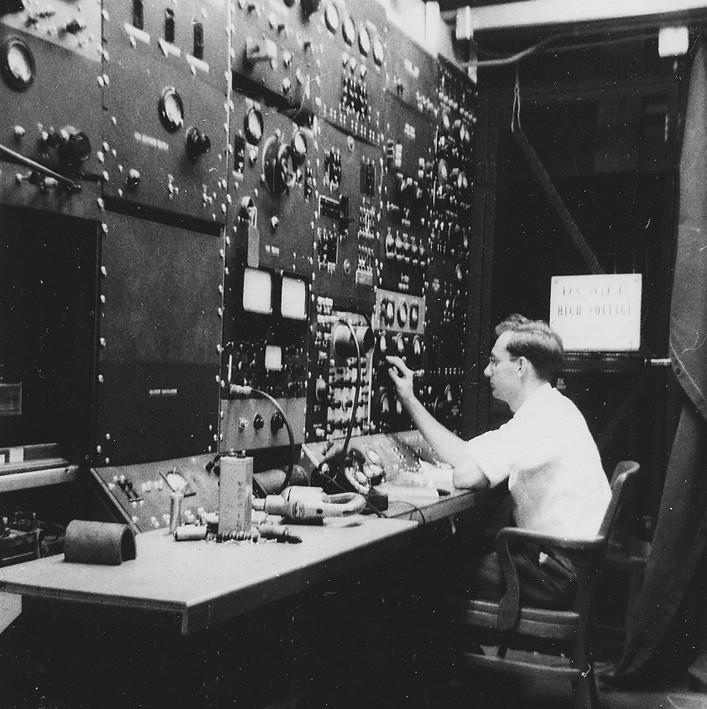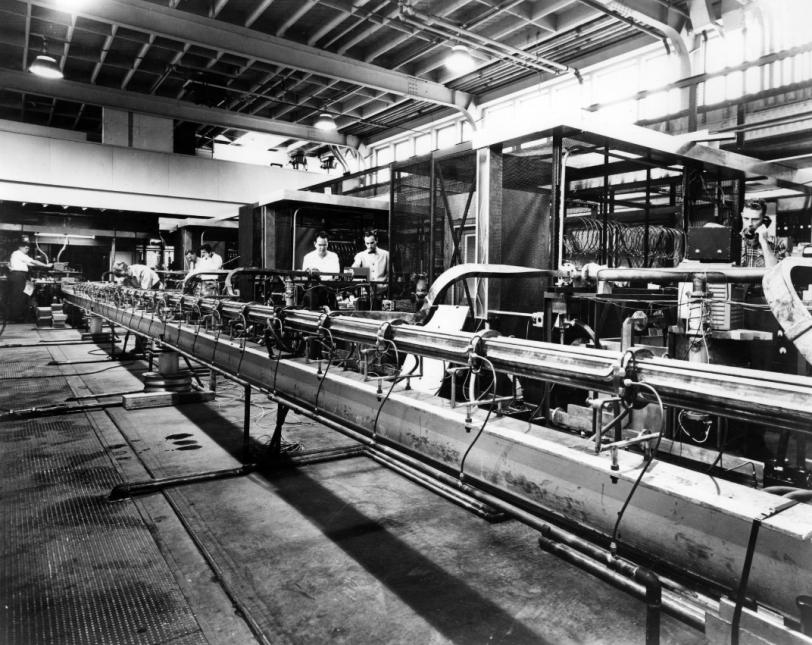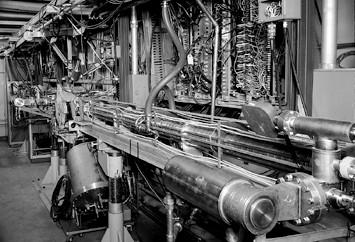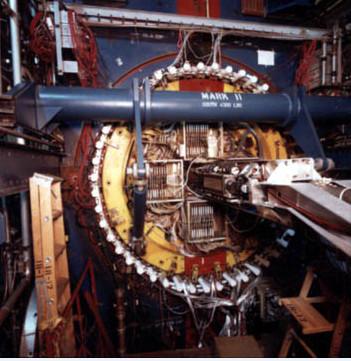MARK
Who is this Mark fellow, and why does he have so much equipment?
There are two branches on the Mark family tree at Stanford University. Mark is the name that has been given to several generations of both accelerators and detectors created and used at HEPL and here at SLAC. The accelerators were all built on campus at HEPL, and were progenitors of the two-mile accelerator that was built at SLAC. The detectors have all (so far) been built at SLAC.
Note: Some links on this page open pdf files, which require the free Acrobat Reader.
Accelerators
Mark I 1947 Electrons first successfully accelerated
using a wave-guide accelerator
Mark II 1949 First successful operation
Mark III 1949 Construction begins
1950 First successful operation
1963-64 Disassembled and re-built with new
accelerator sections
Mark IV 1954 Support received from AEC to build
as a test-bed for the two-mile accelerator
1964 Dismantled
For more detail on Mark and other Stanford accelerators, see the "Linear Accelerators Constructed at Stanford," table from Mary Clarke's inventory of Edward Ginzton's papers held by the Stanford University Archives.

Stan Kaisel, Clare Carlson and Bill Kennedy, 1947. (Stanford University)



Detectors
Mark I 1973 Installed at SPEAR
1977 Dismantled and removed from SPEAR
Mark II 1977 Installed at SPEAR
1979 Moved to PEP at beginning of PEP program
1982 Selected to be first detector at SLC
1985 Upgraded and returned to PEP for testing
1986 Installed in Collider Hall (CEH)
1987 Rolled onto SLC beamline
1990 Moved off SLC beamline to east end of CEH
Mark III 1978 Work begun on detector
1980 Checkout of detector at SPEAR:
1981 Installed at SPEAR: SLAC-SP-032
experimental program initiated
1988 Experimental program ends
1998 Dismantling begun



More about Mark:
Gallery: Early Linacs (Symmetry; volume 02, issue 06; August 2005)
Search the inSPIRE HEP database by accelerator name, detector name or experiment number/name for related publications
